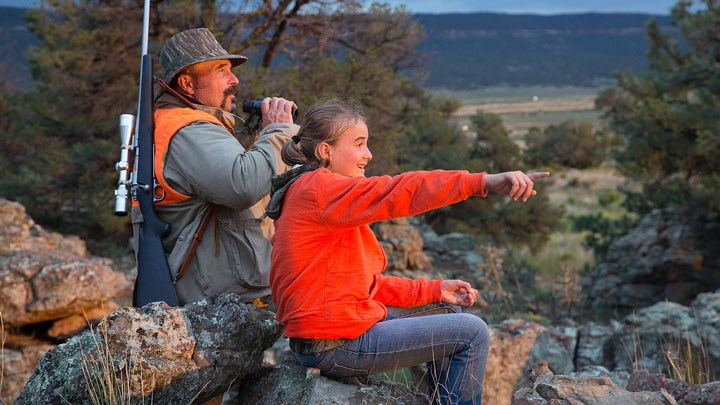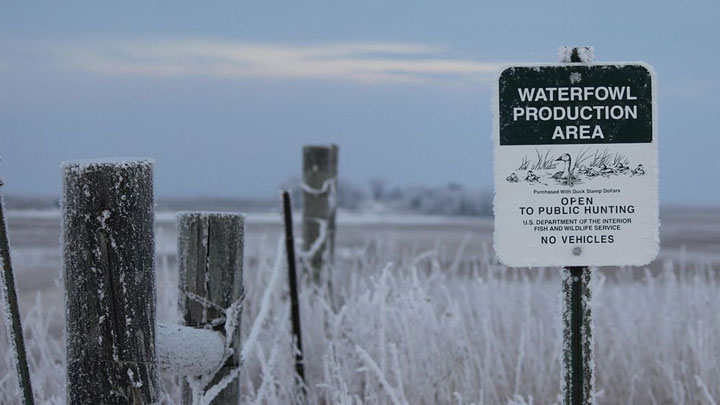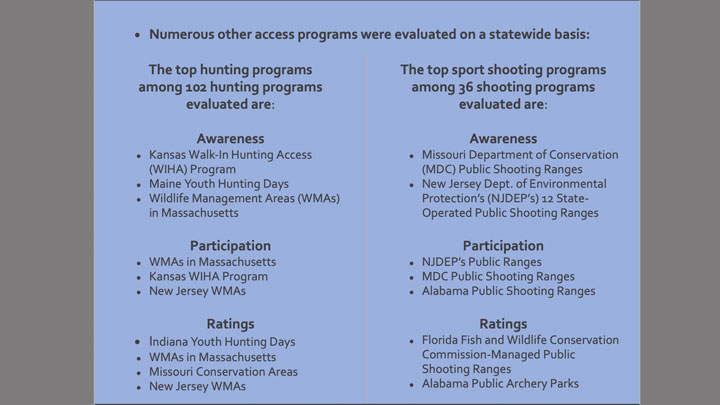
by Mark Damian Duda, Executive Director, Responsive Management - Monday, January 9, 2023

Responsive Management recently completed a national study in partnership with the National Shooting Sports Foundation (NSSF) to assess the quality and availability of hunting and shooting access in the United States. The project was funded through a Multistate Conservation Grant from the U.S. Fish and Wildlife Service and the Association of Fish and Wildlife Agencies and included trend comparisons with data from a previous access study conducted by the partners in 2010.
Access is essential to hunting and shooting participation, being more important than mentors, knowledge of regulations and licensing requirements, and numerous other considerations. Without adequate access to places for hunters and shooters to participate, even the most intensive recruitment, retention and reactivation (R3) efforts are destined to fall short. In fact, access programs and communications about access should be thought of as legitimate R3 endeavors.
Access has historically been a problem for many hunters. For example, research conducted by Responsive Management more than a decade ago identified access as a top constraint to participation among both active and inactive hunters. Fortunately, unlike time, age and other social factors, access is one of the key issues over which agencies and organizations have some influence.

The study entailed a nationwide scientific, probability-based multi-modal survey of 3,265 hunters and 2,511 sport shooters to determine ratings of access for the two activities and to identify the range of issues currently affecting access. As part of this, the survey evaluated specific access programs in 19 states. Using results from the 2010 study, Responsive Management conducted a trends analysis to examine how perceptions of access have changed over the past decade. In addition to national and regional results, the new survey data for hunters were presented by primary species hunted (deer, elk, waterfowl, turkey, etc.).
Among the notable findings and implications from the study:
Physical Aspects of Access
Social/Psychological Aspects of Access

Numerous other access programs were evaluated on a statewide basis with results as follows:
The study’s final report includes the full survey results as well as 99 recommendations for agencies and NGOs (non-governmental organizations) to use as they move forward with access programs and efforts. Among these recommendations are the following key takeaways:
The final report for the hunting and shooting access study—“Assessing the Quality and Availability of Hunting and Shooting Access in the United States”—can be downloaded by clicking here.
Responsive Management is an internationally recognized survey research firm specializing in natural resource and outdoor recreation issues. Our mission is to help natural resource and outdoor recreation agencies and organizations better understand and work with their constituents, customers, and the public.
E-mail your comments/questions about this site to:
[email protected]
Proudly supported by The NRA Foundation and Friends of NRA fundraising.
